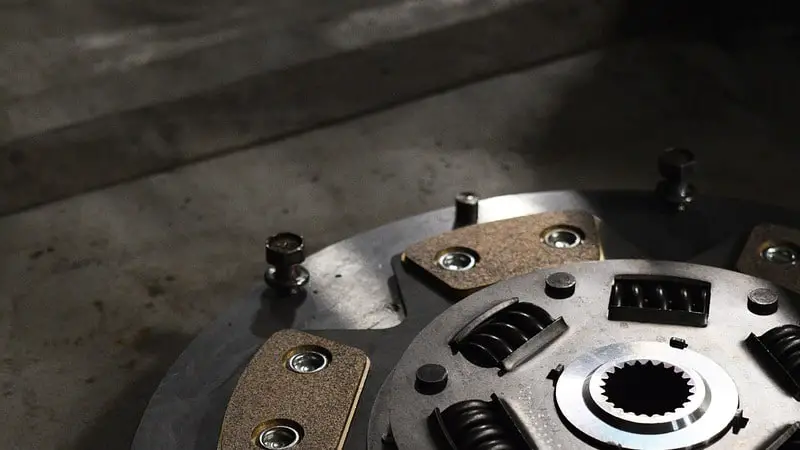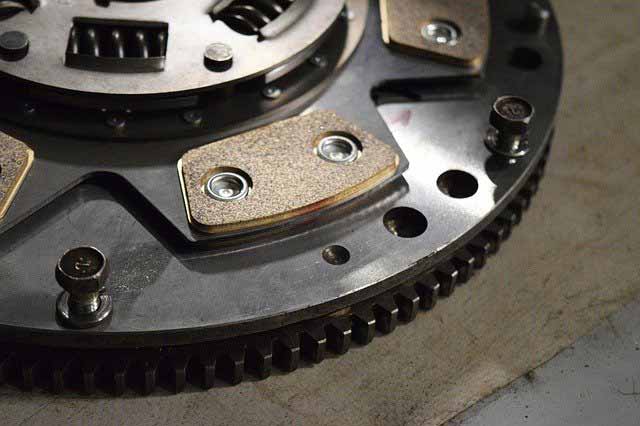If you’re noticing a low bite point on your vehicle’s clutch, it means that the engagement or disengagement is happening closer to the floor than usual. This issue can be attributed to various factors.
Firstly, check the clutch fluid level in the reservoir if your vehicle has a hydraulic clutch system, ensuring it is within the recommended range. For cable-operated systems, inspect and adjust the clutch cable to counter any stretching that may have occurred. Worn-out clutch components such as the clutch disc, pressure plate, or release bearing may also cause a low bite point and might need replacement.
Hydraulic system problems, such as leaks or air in the system, should be investigated and addressed accordingly. Additionally, examine the clutch pedal height and linkage for any misalignment or wear, and consider adjusting or lubricating these components. Finally, issues with the flywheel, such as damage or wear, should not be overlooked.
What causes a low clutch bite point and how to fix it?

A low clutch bite point refers to the position at which the clutch engages or disengages when you press or release the clutch pedal. If the bite point is too low, meaning the clutch engages close to the floor, it can lead to issues like difficulty shifting gears or even clutch slippage. Several factors can contribute to a low clutch bite point:
Worn Clutch Disc
The clutch disc is a crucial component sandwiched between the flywheel and the pressure plate. It consists of a friction material that engages with the flywheel and pressure plate when the clutch is engaged. Over time, this friction material wears out due to the constant engagement and disengagement of the clutch. As the disc wears, its thickness decreases, causing the clutch engagement point to move closer to the floor. Eventually, if the wear is severe, the clutch may slip, making it difficult to transmit power from the engine to the transmission.
To address this issue, the clutch disc needs to be inspected and replaced if it is worn beyond the manufacturer’s specifications. This often involves removing the transmission to access the clutch assembly.
Clutch Cable or Hydraulic System Issues
In vehicles with a cable-operated clutch, the clutch cable is responsible for transferring the force from the clutch pedal to the clutch mechanism. Over time, the cable can stretch, fray, or develop slack, affecting the pedal height and engagement point. Regular inspection and adjustment or replacement of the clutch cable can help maintain proper clutch operation.
For hydraulic clutches, the system relies on the master and slave cylinders to transmit hydraulic pressure, allowing for smoother and more consistent clutch engagement. Leaks in the system or malfunctioning cylinders can lead to changes in pedal feel and engagement point. Inspecting and replacing damaged components, as well as ensuring the hydraulic fluid is at the correct level and free of air, is essential for proper hydraulic clutch operation.
Air in the Clutch Hydraulic System
Air bubbles in the hydraulic clutch system can result in a spongy or inconsistent feel in the clutch pedal. Air can enter the system through leaks or during maintenance procedures.
Bleeding the clutch system involves removing air from the hydraulic fluid, typically by opening a bleeder valve on the slave cylinder and allowing the air to escape as fresh hydraulic fluid is pumped through the system. Bleeding ensures that the clutch pedal feels firm and that the engagement point is consistent.
Clutch Linkage Adjustment
In some vehicles, especially older models, a mechanical linkage connects the clutch pedal to the clutch assembly. This linkage can be adjustable, allowing for changes in pedal height. If the clutch linkage is not properly adjusted, it can result in a low engagement point. Adjusting the linkage involves changing the length of the linkage components to set the desired pedal height and engagement point.
It’s essential to consult the vehicle’s service manual or manufacturer guidelines for the correct adjustment procedure, as an improperly adjusted clutch linkage can lead to premature wear and poor clutch performance.
Worn Clutch Release Bearing
The clutch release bearing, also known as the throw-out bearing, is a component that facilitates the disengagement of the clutch when the pedal is pressed. It is mounted on the clutch fork and moves with it. Over time, the release bearing can wear out due to constant movement against the pressure plate. A worn release bearing can cause changes in the pedal height and create noise during clutch engagement.
Replacing the worn release bearing involves accessing the clutch assembly, typically requiring removal of the transmission. It’s advisable to replace the release bearing whenever the clutch assembly is serviced to prevent future issues.
FAQ’s
Is it bad to have a low clutch?
Yes, a low clutch can lead to issues like difficulty shifting gears, clutch slippage, and potential damage to the clutch system.
Why is my clutch grabbing too low?
A clutch grabbing too low may be due to a worn clutch disc, clutch cable or hydraulic system issues, air in the hydraulic system, or a misadjusted clutch linkage.
Should a clutch bite high or low?
The clutch bite point should typically be in the middle of the pedal travel range for optimal performance and control.
Can clutch bite point be adjusted?
Yes, in some vehicles, the clutch bite point can be adjusted. This adjustment is often possible through the clutch cable or hydraulic system.
Why is clutch biting point so high?
A high clutch bite point can be caused by factors such as a worn clutch disc, air in the hydraulic system, or a misadjusted clutch linkage.
Final Words
If your clutch has a low bite point, it’s important to find out why and fix it. Ignoring the issue could lead to more problems. Check the fluid level, adjust the cable, and inspect for wear.
If you’re not sure, ask a mechanic for help. Keep your clutch in good shape for safe driving!

